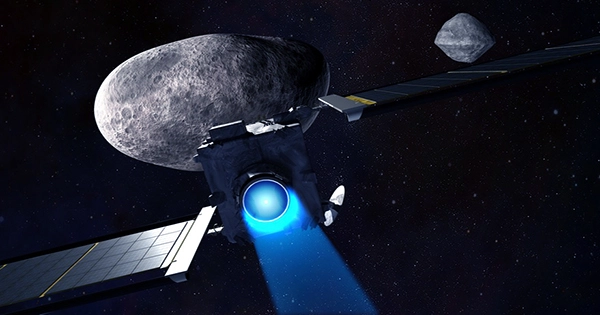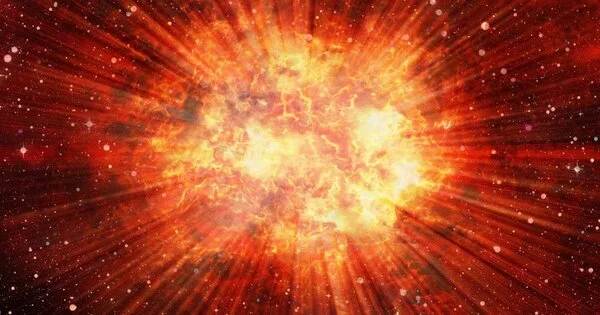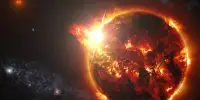Since deliberately colliding with the asteroid moonlet Dimorphos on September 26 to change its orbit by 33 minutes, NASA’s Double Asteroid Redirection Test (DART) spacecraft has been looking into the implications of how this planetary defense technique might be used in the future if such a need should ever arise. This has included additional research on the “ejecta”—the several tons of asteroidal rock that the impact dislodged and blasted into space—the recoil from which significantly aided DART’s drive into Dimorphous.
The investigating team now has a clearer picture of what the DART satellite accomplished at the impact site because of ongoing observations of that developing ejecta. On Thursday, December 15, in Chicago, during the American Geophysical Union’s Fall Meeting, members of the DART team gave a preliminary assessment of their findings.
Tom Statler, the program scientist for DART at NASA headquarters in Washington and one of the presenters at the briefing, stated that what we may learn from the DART mission is all a part of NASA’s overarching quest to study asteroids and other tiny bodies in our Solar System. “Asteroid impact was merely the beginning. Now, we use the data to learn more about the composition and formation of these bodies as well as how to protect our planet from asteroids in the future.
The data from the world’s first planetary defense technology demonstration have been subjected to in-depth, post-impact science and engineering evaluations, which are at the heart of this project. In the weeks following the impact, researchers began to concentrate on determining the momentum transfer caused by DART’s collision with its target asteroid at a speed of about 14,000 miles per hour (22,530 kilometers per hour).
According to scientists, the dusty rock was thrown into space by the impact of DART in excess of two million pounds (one million kilograms), which would have filled six or seven rail cars. In order to determine how much of the asteroid’s movement was caused by the initial hit of DART and how much was due to the recoil, the team is using that data along with new information on the composition of the asteroid moonlet and the characteristics of the ejecta, obtained from telescope observations and images from DART’s ride-along Light Italian CubeSat for Imaging of Asteroids (LICIACube), donated by the Italian Space Agency (ASI).
“We know the initial experiment worked. Now we can start to apply this knowledge,” said Andy Rivkin, DART investigation team co-lead at the Johns Hopkins Applied Physics Lab (APL). “Studying the ejecta made in the kinetic impact – all of it derived from Dimorphos – is a key way of gaining further insights into the nature of its surface.”
Dimorphous and its larger parent asteroid, Didymos, have comparable makeups and are made of the same material, according to observations made both before and after impact. This material has been related to common chondrites, the most common type of meteorite to strike the Earth. These measurements also benefited from the Dimorphos ejecta, which dominated the system’s reflected light in the days the following impact. The ejecta stream has been stretched into a comet-like tail that is hundreds of kilometers long, as seen in telescope photos of the Didymos system even today.
The team estimates that the momentum transferred when DART hit Dimorphos was roughly 3.6 times greater than if the asteroid had simply absorbed the spacecraft and produced no ejecta at all, indicating the ejecta contributed to moving the asteroid more than the spacecraft did. They also assume that Didymos and Dimorphos have the same densities.
If a kinetic impact mission is ever required, it will be crucial to accurately anticipate momentum transfer in order to calculate the size of the impactor spacecraft and the amount of lead time required to assure that a tiny deflection will move a potentially dangerous asteroid off its course.
“Momentum transfer is one of the most important things we can measure, because it is information we would need to develop an impactor mission to divert a threating asteroid,” said Andy Cheng, DART investigation team lead from Johns Hopkins APL. “Understanding how a spacecraft impact will change an asteroid’s momentum is key to designing a mitigation strategy for a planetary defense scenario.”
Before or after DART’s carefully orchestrated collision with Dimorphos, neither Dimorphos nor Didymos present any threat to Earth.
As a project of the Planetary Missions Program Office of NASA, Johns Hopkins APL developed, maintained, and managed the DART spacecraft as well as the DART mission.
















